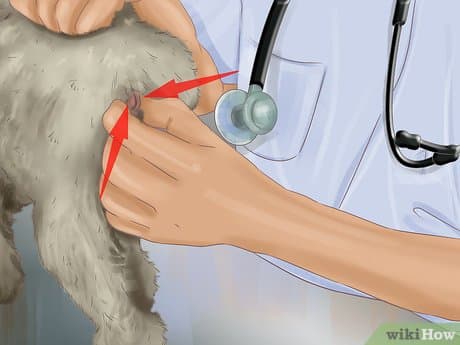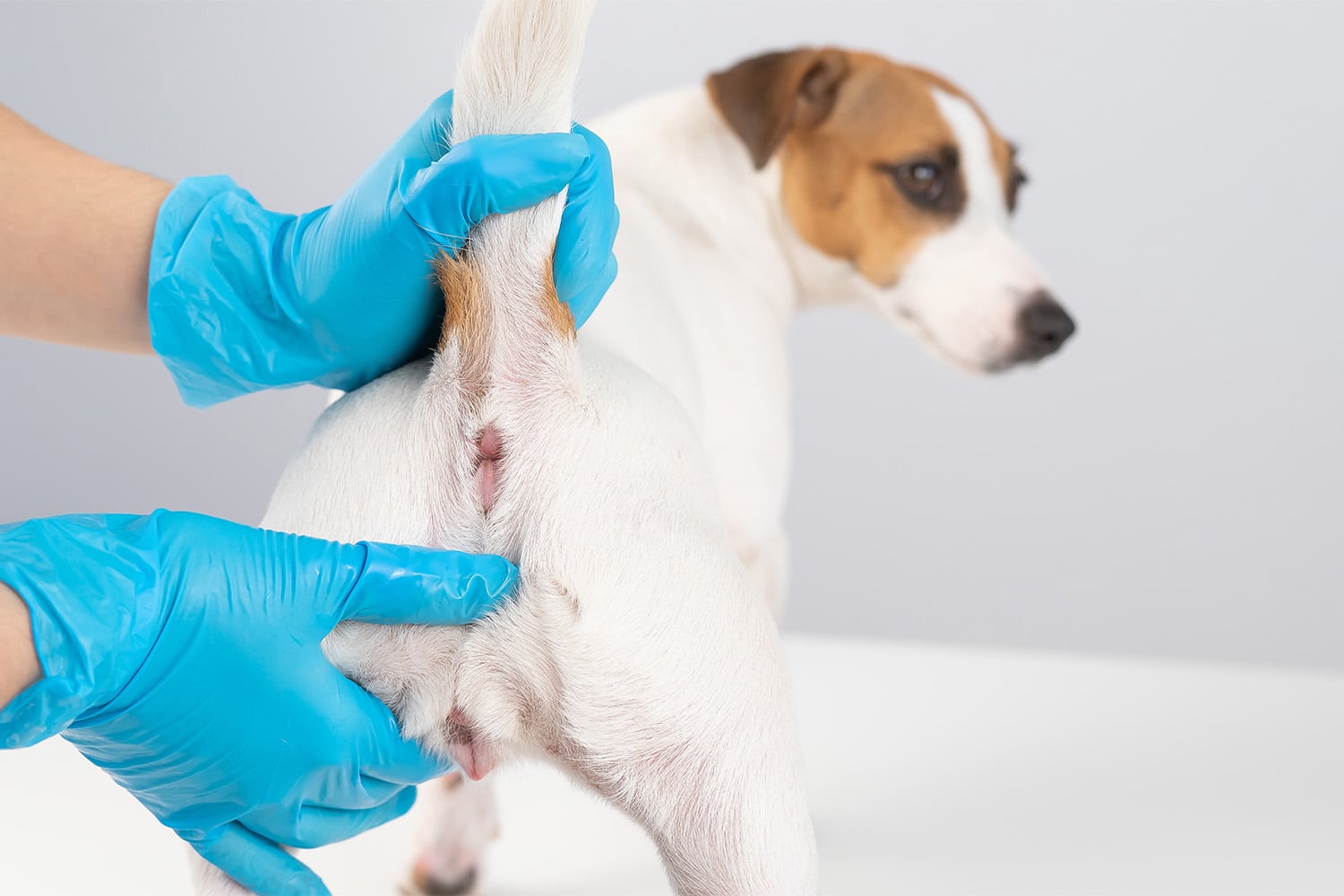In this informative article, you will discover a step-by-step guide on how to express your dog's anal glands. As a responsible pet owner, it is crucial to understand how to address this common issue that can cause discomfort for your furry friend. By following these simple steps, you'll be able to provide relief and promote your dog's overall well-being in a safe and friendly manner. So, let's get started and help your beloved companion feel their best!
What are anal glands?
If you're a dog owner, you may have heard about anal glands or even encountered issues related to them. Anal glands, also known as anal sacs, are small glands located on either side of your dog's anal opening. They are scent glands that produce a foul-smelling liquid, which is released when your dog defecates. These glands play a vital role in marking territory and communicating with other dogs.
Definition and function of anal glands
The anal glands are situated just inside the dog's rectum and are lined with special cells that produce an oily substance. This secretion is unique to each dog and contains a combination of chemicals that allow them to communicate through scent. When a dog defecates, the pressure from the stool causes a small amount of the glandular fluid to be expelled along with the waste, leaving behind a scent that other dogs can detect.

This image is property of www.wikihow.com.
Why dogs may need their anal glands expressed
While most dogs naturally express their anal glands during bowel movements, some can experience problems with their glands becoming impacted or not functioning properly. When this happens, the fluid inside the glands can thicken, causing discomfort and potential health issues. In such cases, it becomes necessary to manually express or empty the anal glands to relieve the dog's discomfort and prevent further complications.
Signs that your dog's anal glands need to be expressed
It's essential to be aware of the signs that indicate your dog's anal glands need attention. Pay close attention to your furry friend's behavior and look out for the following indications:
Excessive licking or scooting
If you notice your dog excessively licking or biting their anal area or frequently scooting their bottom across the floor, it could be a sign that their anal glands are bothering them. This behavior is an instinctive attempt to relieve the pressure or discomfort they are experiencing.
Foul odor
A strong, unpleasant odor emanating from your dog's rear end may indicate an issue with their anal glands. The scent can be quite distinct and challenging to ignore. If you notice a lingering foul smell, it is likely time to express their anal glands.
Swelling or discomfort in the anal area
Keep an eye out for any swelling or signs of discomfort around your dog's anal area. If your dog seems to be in pain or exhibits sensitivity when the area is gently touched, it could be a sign of impacted anal glands.

This image is property of www.wikihow.com.
Things you'll need
Before attempting to express your dog's anal glands, it's important to gather all the necessary supplies. Here's a list of items you'll need:
Disposable gloves
To ensure proper hygiene and minimize the risk of infection, it's crucial to wear disposable gloves throughout the process of expressing your dog's anal glands.
Clean towels or wipes
Having clean towels or wipes handy will allow you to clean up any mess that may occur during the process.
Mild dog-specific shampoo
In case you accidentally come into contact with the glandular fluid, it's a good idea to have mild dog-specific shampoo readily available for washing up afterward.
Cotton balls or pads
Cotton balls or pads can be used to apply any necessary creams or ointments after expressing your dog's anal glands.
Step 1: Prepare yourself and your dog
Before you start expressing your dog's anal glands, it's essential to create a comfortable and well-lit space where both you and your furry friend can relax. Make sure you have all the supplies within reach. Put on a pair of disposable gloves to maintain cleanliness and prevent any potential infections. Lastly, keep some dog treats nearby so you can reward your dog's cooperation during the process.

This image is property of www.wikihow.com.
Step 2: Identify the anal glands
To properly express your dog's anal glands, it's crucial to understand their location. The anal glands are located just inside your dog's rectum, on either side of the anal opening. They are small, round structures that can be somewhat tricky to locate at first. Take note of any abnormalities or issues such as redness, swelling, or discharge that may require further attention or veterinary assistance.
Step 3: Proper positioning
Ensuring your dog is calm and relaxed is essential for a successful anal gland expression. Choose a suitable position for expressing the glands, such as having your dog sit or lie down on their side. If your dog appears anxious or uncomfortable, try offering treats and soothing words to help them relax. It's important to be gentle throughout the process, avoiding any actions that may cause further discomfort.

This image is property of askvet.app.
Step 4: Expression techniques
There are two main techniques for expressing a dog's anal glands: external expression and internal expression. While the external expression method is more commonly used, both techniques can be effective. It's essential to choose a method that you feel comfortable with and that works best for your dog's needs. If you're unsure, consult with your veterinarian for guidance.
External expression method
To use the external expression method, gently feel around your dog's anus by applying pressure on the surrounding area. This pressure causes the anal glands to release the fluid. Be cautious and start with minimal pressure, gradually increasing if necessary. Keep in mind that this method may not be suitable for all dogs, especially those with inflamed or infected anal glands.
Internal expression method
The internal expression method is done by inserting a lubricated gloved finger into your dog's rectum and applying gentle pressure on the anal glands from the inside. This technique should only be attempted if you are confident and have prior experience or professional guidance. Seek assistance from your veterinarian if you are unsure or uncomfortable performing this method.
Step 5: Cleaning and post-expression care
After successfully expressing your dog's anal glands, it's crucial to clean the anal area thoroughly to prevent any infections or further issues. Use mild dog-specific shampoo and warm water to clean the area. Gently pat dry with clean towels to ensure the area is properly dried. If recommended by your veterinarian, you can apply a dog-specific cream or ointment to prevent re-infection or irritation.

This image is property of www.wikihow.com.
Step 6: Reward your dog
After your dog has patiently cooperated throughout the process, it's important to reward them for their good behavior. Offer them treats and plenty of praise. This positive reinforcement will help reinforce their trust and make future anal gland expressions less stressful for both of you. Additionally, offer comfort and reassurance to your furry friend, giving them some extra attention and love.
When to seek veterinary assistance
While expressing your dog's anal glands can often be done at home, there are instances where veterinary assistance may be necessary. If you encounter any of the following situations, consult with your veterinarian:
Persistent difficulties expressing the glands
If you consistently have difficulty expressing your dog's anal glands or find it extremely challenging to locate and manipulate the glands, it's best to seek professional help. Your veterinarian can provide guidance and ensure that the glands are emptied safely and efficiently.
Signs of infection or inflammation
If you notice signs of infection, such as redness, swelling, discharge, or your dog appears to be in pain, it's important to have them assessed by a veterinarian. Infections can be serious and require appropriate medical treatment.
Recurrent anal gland issues
If your dog experiences frequent anal gland problems, it may be indicative of an underlying condition. Consulting with your veterinarian can help identify the cause and determine the best course of action to prevent future issues.
Expressing your dog's anal glands can be a necessary and beneficial part of their overall health care. By following these steps, gathering the necessary supplies, and providing proper care and attention, you can help ensure that your furry friend remains comfortable and healthy. Remember, if you have any concerns or uncertainties, it's always best to consult with your veterinarian for professional guidance and support.

